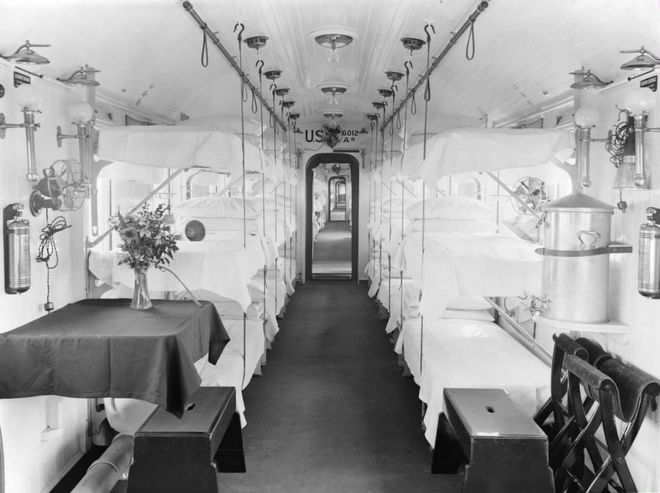
Ambulance trains were mostly filled with bunk beds for injured soldiers
An exhibition on World War One ambulance trains which whisked soldiers away from battlefields has opened.
The purpose-built trains bearing a red cross carried 2.7m passengers in the United Kingdom during the conflict.
Some carriages were filled with rows of bunk beds to hold recovering soldiers, while others served as treatment rooms.
The opening of the exhibition at the National Railway Museum in York marks 100 years since the busiest day of ambulance train traffic during the war.
 WILLIS FAMILY COLLECTION
WILLIS FAMILY COLLECTION
The trains also carried people in the Western Front, the Mediterranean and Egypt, with medical staff living on-board.
Rest rooms were established at railway stations across the UK to deal with wounded troops coming back from the front lines.
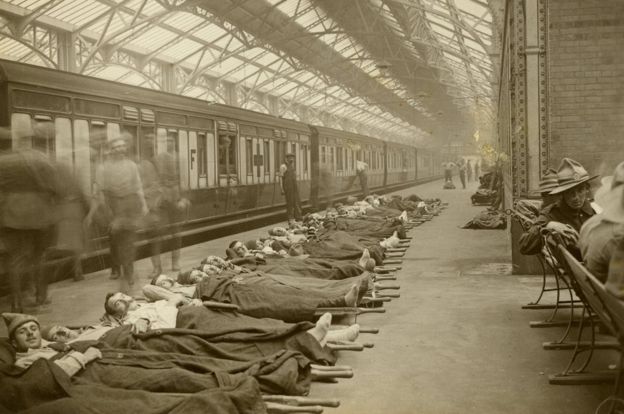 WILLIS FAMILY COLLECTION
WILLIS FAMILY COLLECTION
Several of the most renowned poets of the war, including Siegfried Sassoon and Wilfred Owen, travelled on ambulance trains.
 NRM
NRM
Excerpt from Good-Bye to All That, an autobiography by Robert Graves
"That evening, the R.A.M.C. orderlies dared not lift me from the stretcher to a hospital train bunk, for fear of it starting haemorrhage in the lung.
So they laid the stretcher above it, with the handles resting on the head-rail and foot-rail.
I had now been on the same stretcher for five days. I remember the journey as a nightmare."
Despite carrying a red cross, some trains were still shelled and hid in tunnels for protection.
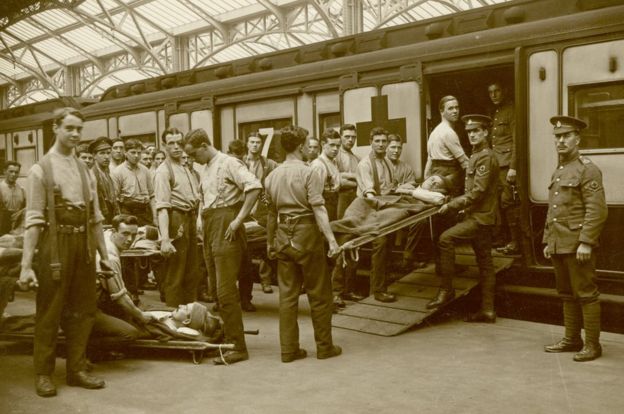 WILLIS FAMILY COLLECTION
WILLIS FAMILY COLLECTION NRM
NRM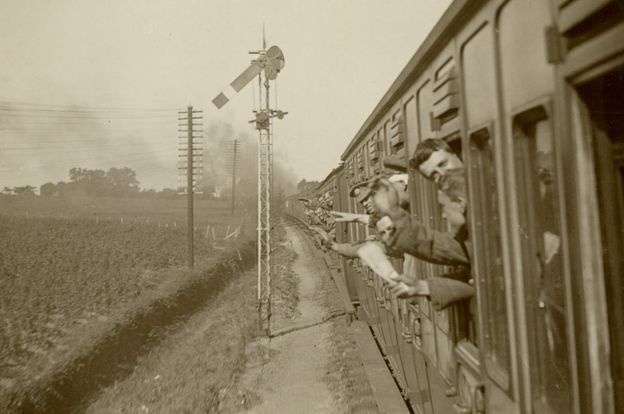 NRM
NRM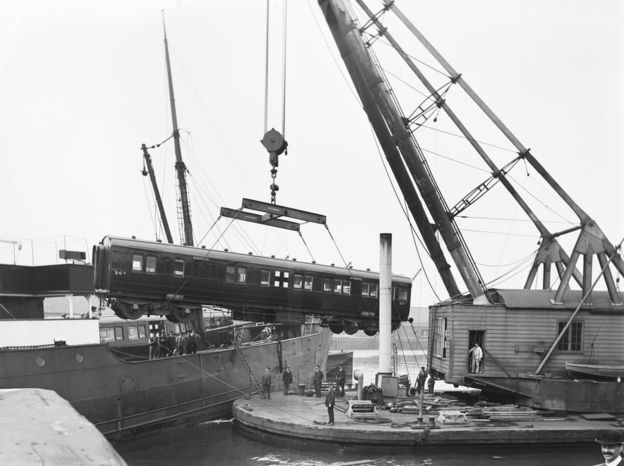 NRM
NRM HORWICH WORKS
HORWICH WORKS
No comments:
Post a Comment